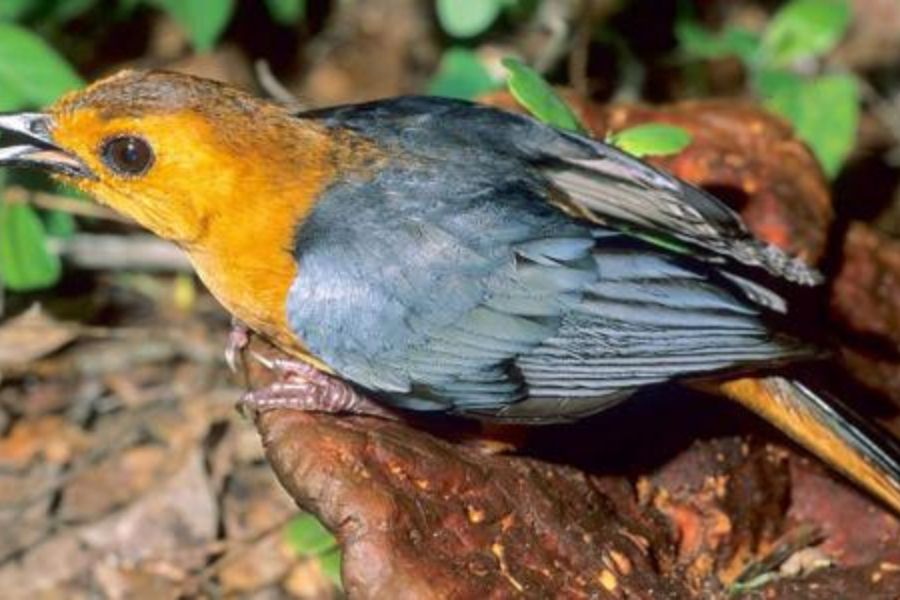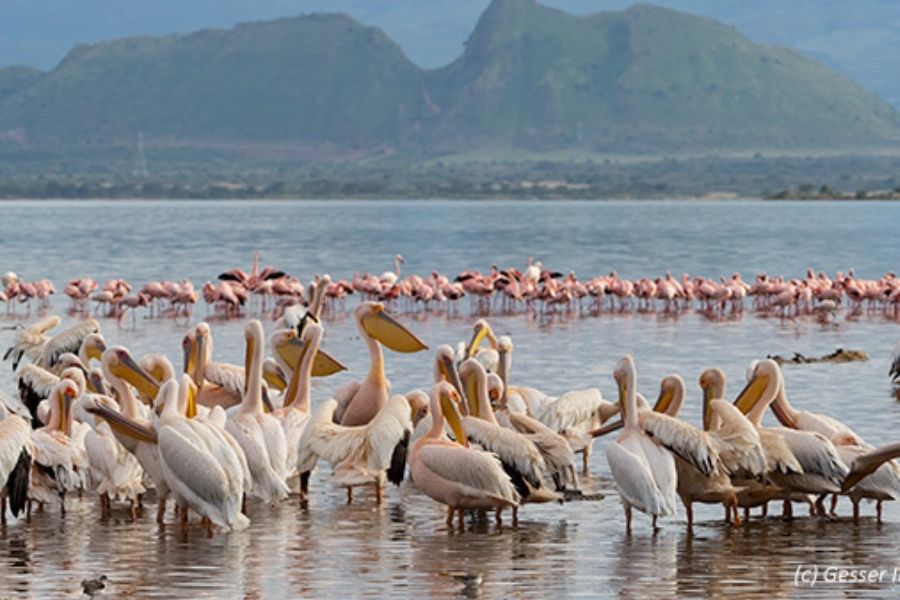KENYA - ONE OF THE BEST BIRD-WATCHING VENUES IN THE WORLD.
Even the staid scientists are dazzled by the brilliance of one particular native to the Kenyan bird scene and called it 'the superb starling' in recognition of its excellent appearance.
Today, most visitors will see superb starlings (except at the coast) in a lodge, hotel gardens, bush and savannah, and the Nairobi city center. Some books even list "car parks" as one of the starlings' preferred habitats.
As for the number of bird species on offer and the ease with which you can view them, Kenya ranks as one of the best bird-watching venues in the world. Some 1,088 bird species have been recorded, nearly 12% of the world's total, many strikingly beautiful and prominent.
This fact, coupled with a good infrastructure of roads and hotels, plus a range of excellent birding guides-books and trained naturalists, makes Bird watching indeed rewarding and within reach of all.



Some Birds To Look For.
The world's most enormous Bird – the Ostrich, lives here.
Look for small groups of ostriches in open country, grassland, savannah, or thorn bush, often near large mammals. The common Ostrich is found in northern Kenya and has pink skin on the neck and legs, while the Somali Ostrich of the dryer north has blue skin.
The Marabou Storks.
This bird species may be seen snatching scraps from the lion's kill, hanging out in the city center, or soaring on mighty wings high above the plains. These big birds with bare pink heads and necks are mainly scavengers, eating dead food, and have significantly benefited from the ever-increasing human settlements.
The Alkaline lakes of the Great Rift Valley may seem edged by pink sand, but you see a living mass of Pink birds – the flamingos. They feed on blue-green algae in the shallow, mineral-rich waters. Lesser flamingos are the most abundant and can be recognized by their dark beaks. Tall, graceful, greater flamingos have pink beaks with black tips.
To the British explorers of the 1800s, a large bird of prey striding purposefully over the grasslands looked like a lawyer's clerk of that time – grey jacket, black leggings, and a quill pen stuck over its ear. So, they called it the secretary bird, and the name has stuck. Secretary birds hunt for rats, mice, lizards, snakes, and other prey in the grass.
Mouse Birds.
These birds scramble through the bushes just like little mammals; the unusual structure of their toes enables them to hang from a branch and scratch their toes simultaneously. Mouse birds are relatively small brown birds with long, stiff tails and crests, found only in Africa.
Oxpeckers.
Also called tickbird, it can often be seen on wild mammals, from elephants to Impala. They search the animal's fur for ticks and other parasites. (The white cattle egrets associated with mammals may rest on an animal's back but eat insects on the ground disturbed by the walking herd).
As for the tiny birds in shiny, iridescent colors that you will see flitting amongst the flowers, these are the Sunbirds. Their thin curved beaks probe into blossoms to suck out the nectar or catch minute insects. Most male sunbirds are brilliantly colored, while the females appear drab.
Bird's nests hanging from the trees or nestled among acacia thorns are usually the works of the weaver birds. There are many different types of weavers, each with their unique building style. Look for Golden weavers at the coast in noisy nesting colonies on islands and garden pools.
Here is a book list that you can use to select books to bring along with you or purchase at any book selection store.
A photographic guide to the birds of East Africa. By Dave Richards.
Jonathan Scott's Safari Guide to East African Birds. By Jonathan and Angela Scott, KENSTA, Nairobi, 1997.
Beautiful birds of Kenya. By John Karmali, Text Book Centre, Nairobi, 1993.
Birds of Kenya and Northern Tanzania. By D.A Zimmerman, D.A Turner, and D.J Pearson 1996 (hardback) and 1999 (reduced size), A. & C Black London.
Collins Illustrated Checklist: Birds of Eastern Africa. By Ber Van Perlo, 1995, HarperCollins.
Field Guide to the birds of East Africa: Kenya, Tanzania, Uganda, Rwanda and Burundi. By Terry Stevenson and John Fanshawe, 2001, T &AD Poyser.



